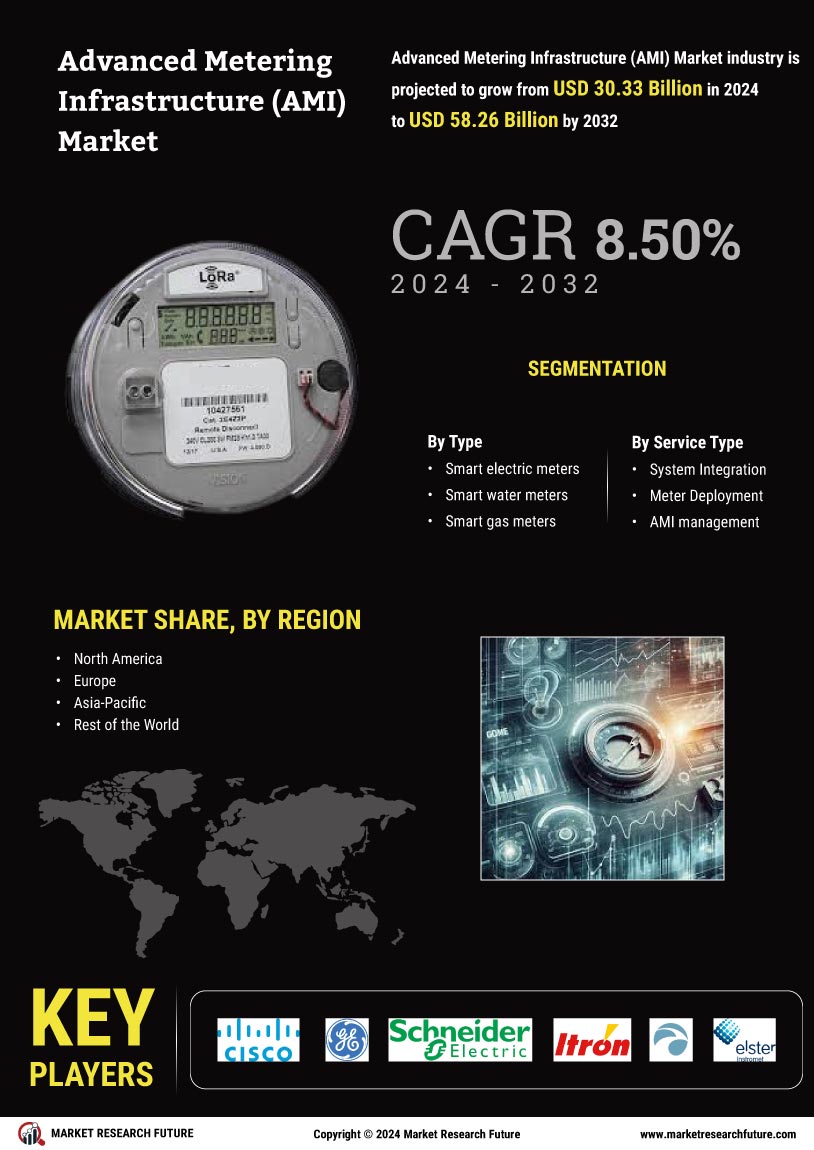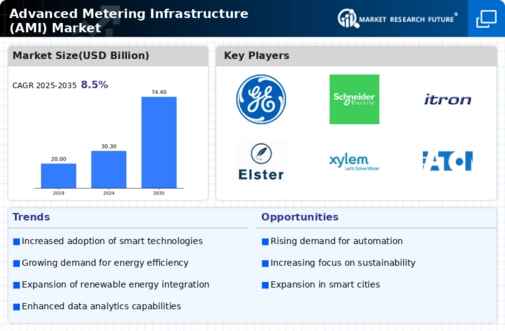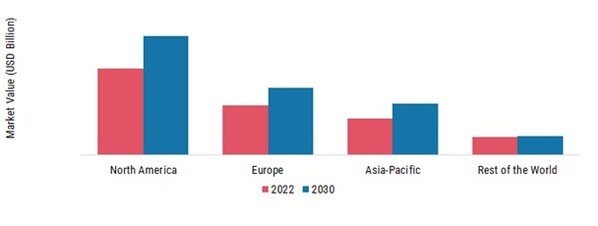Market Growth Projections
The Global Advanced Metering Infrastructure Market (AMI) Market Industry is poised for substantial growth, with projections indicating a market value of 30.3 USD Billion in 2024 and an anticipated increase to 74.4 USD Billion by 2035. This growth trajectory suggests a compound annual growth rate (CAGR) of 8.5% from 2025 to 2035. The increasing adoption of smart meters, driven by technological advancements and regulatory support, is likely to be a key contributor to this expansion. As utilities and consumers alike recognize the benefits of AMI systems, the market is expected to flourish in the coming years.
Regulatory Support and Incentives
Government regulations and incentives play a pivotal role in the expansion of the Global Advanced Metering Infrastructure Market (AMI) Market Industry. Many countries are implementing policies that mandate the deployment of smart meters to enhance grid reliability and consumer engagement. For example, the European Union has set ambitious targets for smart meter installations, aiming for 80% coverage by 2024. Such regulatory frameworks not only facilitate market growth but also encourage utilities to invest in AMI technologies. This supportive environment is expected to contribute to the market's growth trajectory, with projections indicating a rise to 74.4 USD Billion by 2035.
Growing Demand for Energy Efficiency
The Global Advanced Metering Infrastructure Market (AMI) Market Industry is witnessing a surge in demand for energy efficiency solutions. As consumers and utilities alike strive to reduce energy consumption and costs, AMI systems provide real-time data that enables better energy management. This trend is particularly evident in urban areas where energy demands are high. For instance, cities implementing AMI have reported reductions in peak demand by up to 15%. The market is projected to reach 30.3 USD Billion in 2024, reflecting the increasing adoption of smart meters and energy-efficient technologies.
Rising Consumer Awareness and Engagement
Consumer awareness regarding energy consumption and sustainability is on the rise, significantly impacting the Global Advanced Metering Infrastructure Market (AMI) Market Industry. As consumers become more informed about their energy usage, they demand greater transparency and control over their consumption patterns. AMI systems empower consumers by providing detailed insights into their energy usage, enabling them to make informed decisions. This shift in consumer behavior is prompting utilities to adopt AMI technologies to enhance customer engagement and satisfaction. The growing emphasis on consumer-centric solutions is likely to drive market growth in the coming years.
Integration with Renewable Energy Sources
The integration of renewable energy sources into the grid is a crucial factor influencing the Global Advanced Metering Infrastructure Market (AMI) Market Industry. As more utilities incorporate solar, wind, and other renewable sources, the need for advanced metering solutions becomes paramount. AMI systems facilitate the management of distributed energy resources, allowing for better grid stability and efficiency. This trend is expected to accelerate as countries aim for carbon neutrality and increased reliance on renewables. The market's growth is anticipated to align with these sustainability goals, further solidifying the role of AMI in modern energy systems.
Technological Advancements in Metering Solutions
Technological innovations are driving the evolution of the Global Advanced Metering Infrastructure Market (AMI) Market Industry. The integration of Internet of Things (IoT) technologies and advanced data analytics is enhancing the capabilities of smart meters. These advancements allow for improved data collection, real-time monitoring, and predictive maintenance, which can lead to significant operational efficiencies for utilities. As a result, the market is likely to experience a compound annual growth rate (CAGR) of 8.5% from 2025 to 2035. Utilities are increasingly recognizing the value of these technologies, further propelling the adoption of AMI solutions.


















Leave a Comment